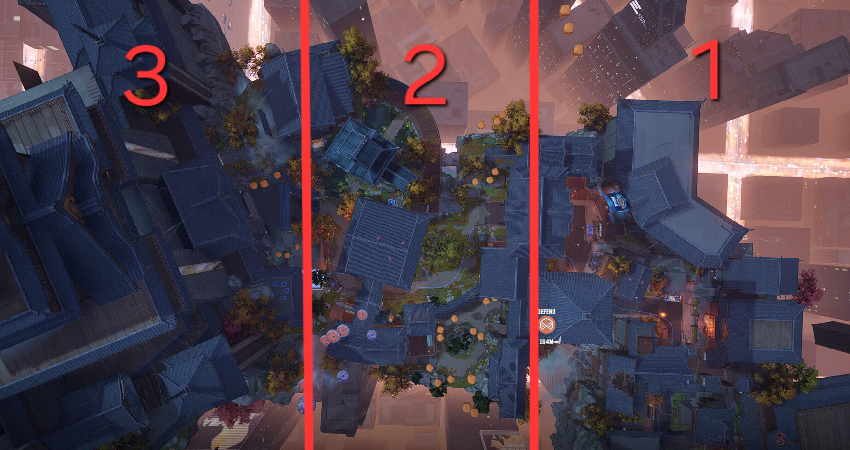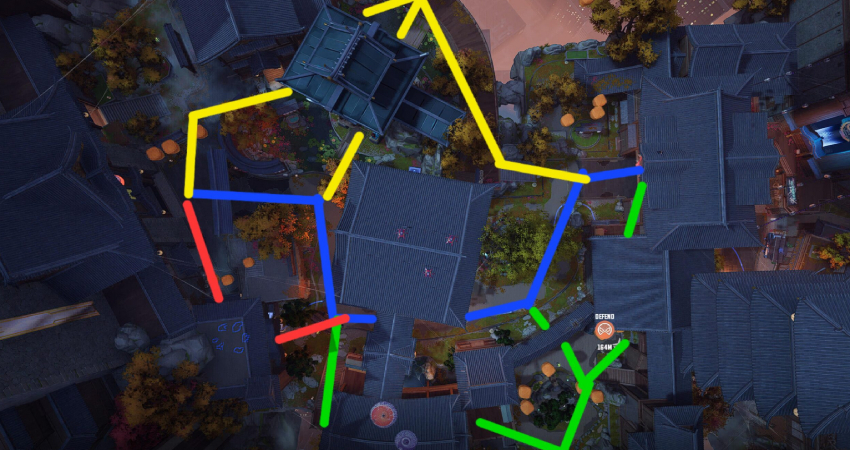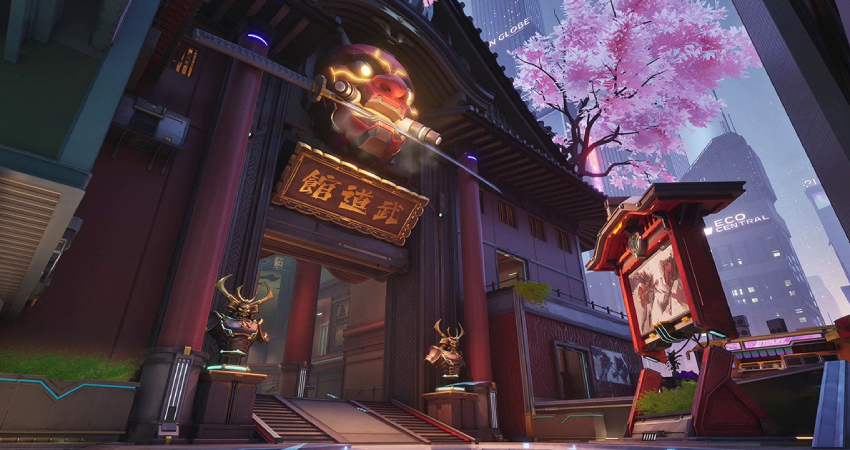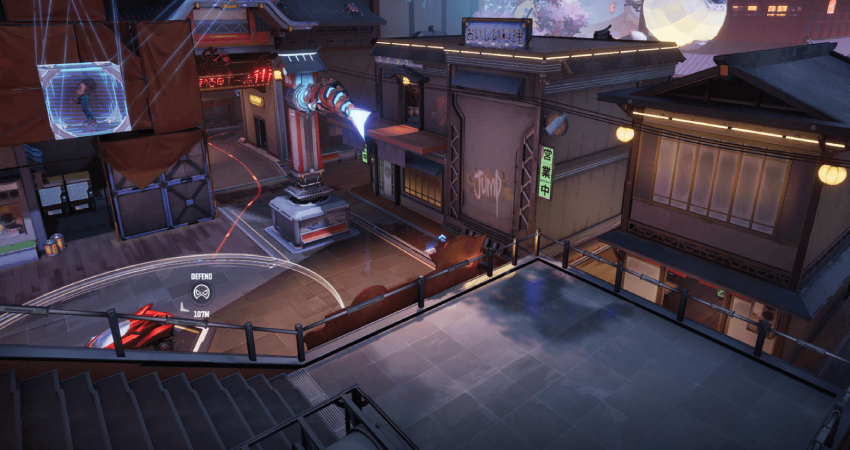Introduction
Convoy-style engagements in Marvel Rivals demand a sharp understanding of map layouts, objective flow, and strategic hero play. One team, the attackers, is tasked with escorting a payload – be it the Spider Convoy on Spider-Islands or the "Spider" on Shin-Shibuya – through a series of checkpoints to a final destination. The defending team, conversely, must use every tactical advantage to halt this progress. It's important to note that in Quick Play matches, teams will typically only play a single round as either attacker or defender, whereas competitive formats involve sides switching, offering a chance to adapt strategies. Success in these dynamic encounters hinges on deep map knowledge, encompassing optimal routes, critical choke points, the effective use of verticality, and interaction with environmental elements like destructible cover and jump pads.
The Tokyo 2099 maps, Spider-Islands and Shin-Shibuya, transport combatants to a vibrant, futuristic iteration of Japan, rich with cyberpunk aesthetics and nods to Marvel lore, such as the presence of Pixel Corp and Alchemix facilities. Spider-Islands unfolds within a visually stunning Japanese garden setting, complete with traditional temples and lush flora, all given a high-tech overhaul. Shin-Shibuya, on the other hand, presents a dense urban battlefield, characterized by narrow alleyways, numerous sneaky corners, and significant vertical elements that define its engagement dynamics. These battlegrounds are not static; they are "destructible, ever-changing" environments where altering the terrain can be as crucial as landing a perfect shot. This guide aims to equip players with the expert-level strategic intelligence needed to navigate and dominate both Spider-Islands and Shin-Shibuya, turning map awareness into a decisive weapon.
Spider-Islands
Spider-Islands is a Convoy map set in a serene yet strategically complex Japanese garden environment, featuring traditional architecture augmented with futuristic technology. The map is known for its numerous alleyways and destructible wooden structures, which can significantly alter lines of sight and cover. It offers a diverse range of environmental layouts, accommodating various team compositions, and generally plays as a slower, more methodical push compared to some other maps.

Sector 1: The Attacking Spawn & Initial Push
The first sector of Spider-Islands sets the stage for the entire match, often determining early momentum.
Payload Path & Key Routes
The primary payload route, often referred to as the Blue Path, begins with a notably "super long hallway" that naturally channels teams towards the "main corner" – the first significant defensive position. Alternative approaches from the attacking spawn include the Yellow Path, originating from an upper exit door, providing an immediate, albeit exposed, high-ground option. The Red Path utilizes a less-frequented third spawn door, guiding attackers through a side building and along a covered pathway. This route offers access to the rear of the main Blue Path and is particularly useful for pushing towards the typical defensive setup at the second bend of the payload track. Characters with abilities to traverse open areas quickly can use a secondary branch of this path to shortcut to a smaller, more secluded path. Defenders, too, may exploit this route for flanking maneuvers. Finally, the Green Path diverges from the main route, offering a secondary angle of attack to apply pressure on the Blue Path, especially as the convoy approaches the end of this first zone.
Choke Points
The Main Corner beyond the initial long hallway is the sector's most critical choke point. This is where defenders frequently establish their first major hold, often corresponding to the "second bend" mentioned in route descriptions. Entrances and exits associated with the Red Path through the side building can also become contested chokepoints if defenders anticipate or react to pushes from that direction.
Key Grapple Perches & High Ground
The Upper Spawn Exit (Yellow Path) grants attackers an initial high-ground advantage. The Side Building (Red Path) contains several elevated positions that can overlook segments of the Blue Path, beneficial for both attackers and defenders. A particularly cunning, though high-risk, high-reward spot for Peni Parker involves placing her Spider Nest directly under the large bell near the start of the map. By destroying the bell's support beams, the bell drops and can conceal the nest, making it difficult to target while still allowing its mines to cover the first checkpoint area. This setup requires considerable speed and potentially a teammate's assistance to execute before engagements begin.
Best Hero Picks (Sector 1)
- Heroes with strong ultimate generation (consistent poke damage dealers)
- Dive heroes (Spider-Man, Wolverine) to exploit side routes
- Venom for overall map control
- Storm for area denial
- Area controllers (Storm, Peni Parker)
- Heroes adept at holding tight corners and chokepoints
- Invisible Woman for defensive utility
- Triple Strategist compositions for sustain
Sector 2: The Garden
As the convoy moves into the second sector, "The Garden," the environment opens slightly but introduces new hazards and strategic points of interest.

Payload Path & Flanking Opportunities
The Blue Path remains the standard convoy route, notably passing under a bridge structure midway through this sector. A significant flanking option is the Green Path, described as an under-utilized back route. It connects from the attacker's spawn area, providing discreet ground-level entry points. Stairs along this path also grant access to upper levels, allowing continuation of the flank or a crossover via the bridge to the central building. The Yellow Path serves as an excellent flanking route, particularly effective towards the end of this zone's push. It allows movement through a building to cross the bridge or to rejoin the Blue Path. A more aggressive and risky option for attackers is the Red Path, which cuts through a small room that previously served as the defenders' first spawn point.
Best Hero Picks (Sector 2)
- Attackers: Invisible Woman (for displacement), Hulk, Magneto. Mobile flankers for Green/Yellow/Red paths.
- Defenders: Heroes resistant to displacement or capable of punishing flankers. Peni Parker for mine placement.
- General Recommendations: Venom and Storm continue to be strong choices.
Sector 3: Inside the Building – The Final Stand
The final push takes the convoy "Inside the Building," a more confined space where control of specific routes and doorways becomes paramount.
Payload Path to Victory
The Blue Path is the standard convoy route to the finish line. The Green Path is a common secondary route, branching from the Blue Path and cutting behind to small rooms, offering alternative angles and discreet movement options. Defenders can use this route to flank attacking pushes at the start of Zone 3. The Red Path is a critical route featuring a jump pad that leads to an elevated doorway, granting direct access to the convoy finish line and the defender spawn area. Perhaps the most unique route is the Pink Path, a hidden passage that cuts under the Blue Path. It leads to the backside area where the Green Path also wraps around. Crucially, the entry point to the Pink Path contains a health kit, making it an excellent "emergency safe zone".
Spider-Islands Strategy Matrix
| Sector | Key Choke Point | Key High Ground | Attacker Focus | Defender Focus | Core Tip |
|---|---|---|---|---|---|
| 1 | Main Corner, Side Building Entrances | Upper Spawn Exit, Side Building, Bell Tower | Ult Farmers, Dive Heroes | Corner Holders, Area Controllers | Farm ultimates in the initial hallway; first ults at the corner can snowball the point |
| 2 | The Ledge (Water Hazard), Under Bridge | Elevated Platform, Bridge, Green Path Stairs | Displacement Heroes, Mobile Flankers | Anti-Displacement, Flank Punishers | Prioritize controlling The Ledge for environmental kills; even one can win a team fight |
| 3 | Glowing Circle Doorway, Corridor Entrances | Red Path Doorway, Yellow Path Ledge, Pink Path Exit | Mobile Heroes, Peni Parker | Elevated Position Holders, Flankers | Control the Red Path jump pad/doorway; it's a direct line to the finish and defender spawn |
Shin-Shibuya
Shin-Shibuya is a Convergence map, meaning attackers must first capture the "Spider" (payload) and then escort it through three distinct sections. The map is a vibrant cyberpunk cityscape, defined by its futuristic Japanese architecture, narrow alleyways, numerous sneaky corners, and significant verticality. Its long sightlines generally favor ranged heroes, while the center of each point tends to be quite open. Strategist characters often find this map conducive to their playstyles.

Phase 1: Capture the Spider
The match on Shin-Shibuya begins with the crucial task of capturing the payload.
Payload Path & Initial Routes
The Blue Path represents the most direct route from the attacker spawn to the objective. Parallel to this, the Red Path offers an alternative by cutting through a "ninja shop"; this route can proceed via an elevated door or by breaking through a destructible wall section within the shop. The Red Path also provides access into the central building near the objective, allowing for a discreet approach, a direct push, or temporary shelter. For characters with flight or exceptional aerial mobility, the Dotted Teal Path allows travel over the buildings directly to the objective. Once past the initial choke point, the Yellow and Green Paths become available as flanking routes.
The First Choke: Corridor Under Suspended Roof
The initial portion of this section funnels attackers towards a distinct corridor that passes under a suspended roof. This is the only chokepoint available to attackers when entering the initial capture point, if other avenues are not created or utilized.
Best Hero Picks (Phase 1)
Phase 2: Spider On The Streets
Once the Spider is captured, attackers must escort it through the neon-lit city streets towards the halfway checkpoint.
Payload Path & Key Routes
The Blue Path denotes the standard convoy route, which notably wraps around the top floor of the central building in this section. From the new attacker spawn, the Red Path follows rooftops and the second floor of buildings. This path grants access to the upper floor of the crucial central building and a less-frequented bridge that loops around to a back alley. The Green Path offers a ground-floor route through the central building. The Teal and Yellow Paths both emerge from a back alley, described as an underutilized area. Lastly, the Pink Path cuts through a back building (which was the defender spawn in Section 1).
Phase 3: The Final Push to Destination
The final phase involves escorting the Spider to its ultimate destination, often culminating in intense, close-quarters battles.
The Last Defense: Final Two Choke Points
A significant portion of the defensive effort in this phase will be concentrated on holding the "final two chokes". The initial open path of this section is considered very difficult to defend due to a significant attacker spawn advantage. Therefore, it is often acceptable for defenders to concede some initial space until the finish line comes into view, then consolidate their defense at these critical chokepoints. The final room itself has limited entry points, making the side paths (Red and Pink) crucial for attackers to avoid being funneled into a kill zone.
Shin-Shibuya Phase Strategy Matrix
| Phase | Key Choke Point | Key High Ground | Attacker Focus | Defender Focus | Core Tip |
|---|---|---|---|---|---|
| 1: Capture | Suspended Roof Corridor | Ninja Shop Roof, Building next to Obj., Punisher's Ledge | Wall Breakers, Choke Bypass (Dr. Strange, Psylocke) | High Ground Holders (Namor, Loki, Punisher) | Destroy the main wall on the left flank to open routes and avoid the primary choke |
| 2: Streets | Corner Turn, Narrow End Streets | Rooftops, Center Building Top Floor, Back Alley Entrances | Vertical Dominators (Psylocke, Iron Man), Flankers | High Ground Contesters, Anti-Flank | Split team to control the top floor of the central building; it offers dominant map control |
| 3: Final Push | Final Two Chokes, Final Room Entrances | Pink Path Platform, Yellow Path Bridge, Green Path Balcony | CQB Specialists, Flankers (Spider-Man, Iron Fist) | Stall Heroes, Flankers | Defenders should concede early space if needed and make a stand at the final two chokepoints. Attackers use side paths |
Universal Convoy Wisdom for Tokyo 2099
Beyond map-specifics, certain principles of convoy gameplay are universally applicable to achieving success in Tokyo 2099.
General Advanced Tactics
- Ultimate Management: This is a cornerstone of high-level play. Diligently track both enemy and allied ultimate charges. Baiting out key defensive ultimates before committing your own offensive ones is a common tactic. On maps like Spider-Islands, which tend towards slower pushes, countering enemy ultimates with well-timed defensive ultimates can create crucial openings.
- Staggered Spawns: Avoid the common pitfall of trickling back into a fight one by one after dying. It's almost always better to wait and regroup for a full team engagement. Conversely, if your team is losing a fight near the payload and a full retreat seems unlikely, it can be beneficial to stall on the payload for as long as possible to buy time.
- Objective Focus: While eliminations are important, the primary goal in convoy modes is to either advance the payload (attackers) or halt its progress (defenders). Prioritizing the objective over chasing kills is fundamental to winning.
- Map Control: Strategic positioning is paramount. This involves securing and utilizing high ground, understanding and controlling key choke points, and being aware of all viable flank routes to gain tactical advantages over the opposition.
- Health Pack Control: Knowing the locations of health packs is crucial for sustain, especially for heroes who operate on flanks or away from their team's primary healer. Planning engagements or disengagements around health pack availability can significantly increase survivability.
Maximizing Verticality and Mobility Heroes
Both Spider-Islands and Shin-Shibuya feature significant vertical elements. Heroes with inherent mobility, such as flight, grappling, or enhanced jumping, can exploit these features to great effect. Characters like Spider-Man, with his Web-Swing for rapid engagement/disengagement and Amazing Combo for potential environmental kills; Psylocke, using Psi-Blade Dash to secure high ground and Psychic Stealth for flanking; Iron Man, leveraging flight for aerial bombardment and repositioning; Storm, controlling airspace and sightlines; and Black Widow, utilizing jump pads to reach sniper nests or unexpected angles, can provide immense value.

Strategic Use of Destructible Environments
The battlefields of Tokyo 2099 are not static. Destructible elements should be viewed as tactical tools. They can be used not only to create shortcuts but also to alter lines of sight, remove critical enemy cover, or even establish new defensive positions. Shin-Shibuya's first point wall stands as a prime example of destruction leading to "meaningful gameplay changes" by fundamentally altering how the initial objective is approached. Spider-Islands features numerous destructible wooden houses that can open up the map, and unique interactions like the bell tower provide more niche, but potentially impactful, environmental plays.
Key Destructibles & Environmental Hazards
| Map | Location | Feature | Tactical Impact | Key Heroes |
|---|---|---|---|---|
| Spider-Islands | Start of map, near bell tower | Bell Tower Supports | Dropping bell can hide Peni Nest, alters LoS | Peni Parker, any hero for LoS alteration |
| Spider-Islands | Attacker's left side of payload path | Ledge over Water Pit | Critical for environmental eliminations | Invisible Woman, Hulk, Magneto |
| Shin-Shibuya | Attacker's left approaching first choke | Large Wall Section & Building | Crucial: Widens choke, opens multiple pathways | Iron Man, Hulk, Dr. Strange |
A fundamental "rhythm" often emerges in these convoy maps: the payload progresses along a primary path until it encounters a significant choke point. To overcome this, teams must effectively utilize alternate flanking routes, high ground, and character abilities. Once the choke is broken, the payload advances, and this cycle of push, choke, and multi-angled engagement tends to repeat. Understanding and anticipating this rhythm is key to maintaining momentum or staging a successful defense.
Furthermore, while some heroes may generally excel on a particular map due to its overall design (e.g., Psylocke on the highly vertical Shin-Shibuya), the optimal hero pick can be highly dynamic and change significantly from one sector or phase to the next. For instance, a hero adept at destroying structures might be invaluable for attackers in Shin-Shibuya's first phase, while a character specializing in environmental eliminations could be a game-changer for attackers in Spider-Islands' second sector. This underscores the advantage held by players who can flexibly switch between heroes or by teams that can adapt their composition to meet the specific challenges posed by each segment of the map.
Your Blueprint for Tokyo 2099 Dominance
Mastering the convoy maps of Tokyo 2099 – Spider-Islands and Shin-Shibuya – demands more than just sharp aim; it requires a deep understanding of their intricate layouts, the strategic flow of their objectives, and the nuanced ways heroes can interact with their environments. The critical pillars for success revolve around comprehensive map awareness, including all primary and alternative routes; diligent control of choke points; the consistent exploitation of verticality and high ground; the tactical use of destructible elements to reshape the battlefield; and making intelligent, adaptive hero selections tailored to the specific challenges of each sector or phase.
This guide provides a foundational blueprint. True dominance will come from using this knowledge as a springboard for personal experimentation, refining team strategies, and developing the instinct to read the evolving battlefield. Always be thinking one step ahead: where is the payload moving, where will the next critical engagement occur, and how can individual abilities and team coordination best be leveraged to influence that outcome? With focused practice and strategic application, the neon-drenched streets and serene gardens of Tokyo 2099 can become familiar territory for victory.
